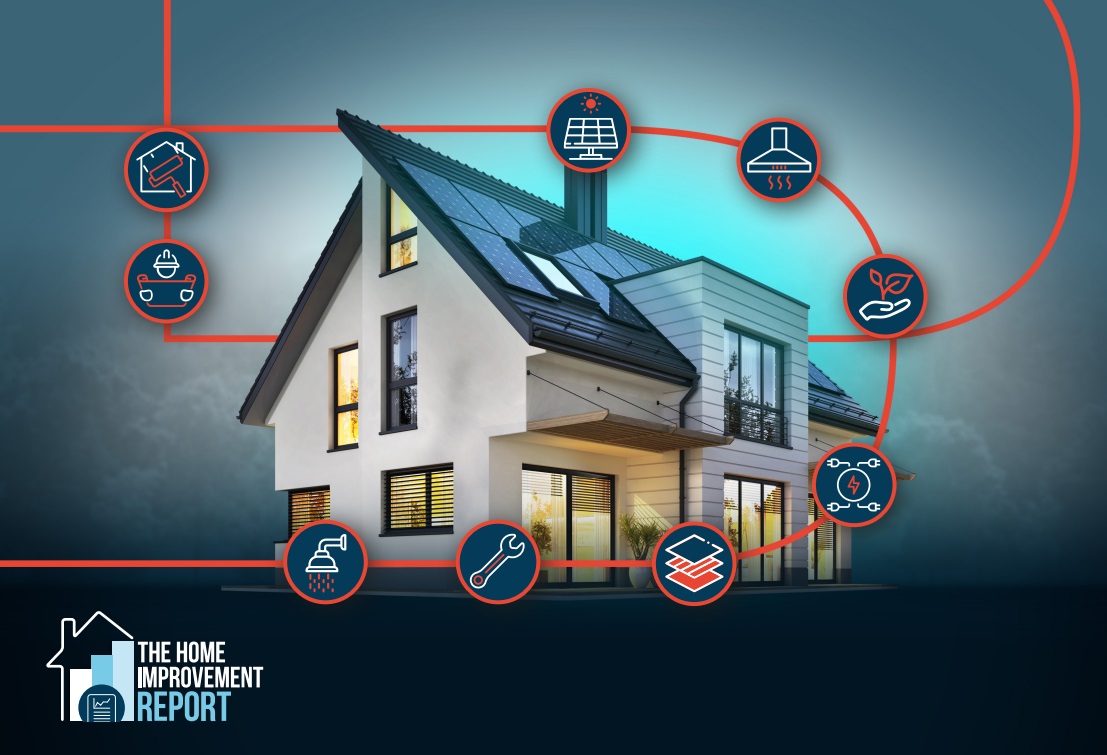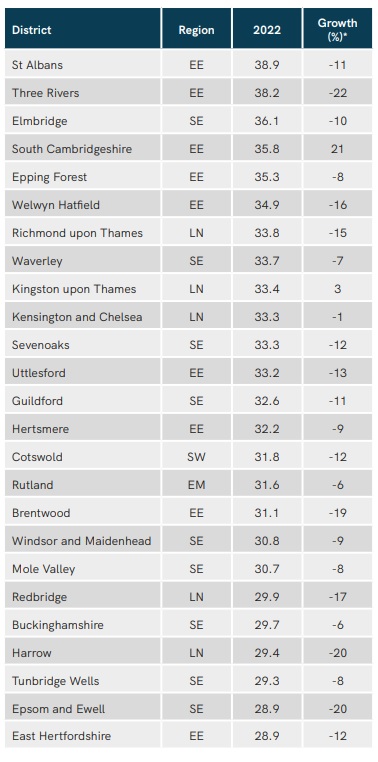The Home Improvement Report 2023 edition
Contents |
[edit] Introduction
The Home Improvement Report 2023 Edition is the latest update to Barbour ABI's long-standing report covering major trends in planning applications. It covers
- Impact of economic disruption on the home improvement market
- Changes to market drivers we are seeing and the reasons why
- In-depth regional analysis of what activity is happening and where
- Uncover exactly where the value is being spent
[edit] Key highlights for 2023
- The latest data reveal the exceptional impact on the home improvement market created by an extraordinary series of economic and social disruptions.
- All regions saw a sharp drop in the relative strength of the market from the peak in 2021, which ranged from 26% in the North East to 16% in London.
- While London still has the most overall application approvals, the approval rate is lower than in other regions.
- Applications data highlights the rising trend of energy efficiency. The Building Merchants Index (BMI) shows that renewables and water-saving sales saw the fastest growth in 2022.
[edit] Solar Panels and Insulation
New data in the Home Improvement Report shows that homeowners across the country are turning to solar panels and insulation upgrades to combat high energy costs.
According to the new analysis of planning applications by Barbour ABI in their latest Home Improvement Report, the number of planning applications citing insulation has more than doubled since 2019, and those citing solar panels have risen threefold. Not only is this saving money on heating, but evidence suggests energy efficiency upgrades are now increasing house values, even as the housing market struggles.
This trend follows the disruption of the pandemic, which had previously led to a surge in home improvement in 2019 and 2020, as homeowners spent savings on improving outside space and reconfiguring internal space to make way for home working.
Barbour ABI Chief Economist, Tom Hall said:
“The latest data reveals the exceptional impact on the home-improvement market created by an extraordinary series of economic and social disruptions. Covid saw home improvement applications boom as people looked to extensions, home office improvements and garden upgrades to improve home working conditions – activity has fallen over the last year but overall numbers remain above the pre-pandemic trend.
“The surge in solar panel installations and the rapid rise in insulation work suggests that the cost savings from reduced energy bills and increasing evidence of an energy efficiency premium is now tempting for better-off homeowners.”
Meanwhile, the pressure on the UK to meet its net zero targets is likely to grow, prompting the use of incentives or regulation to encourage reluctant owners to improve the energy efficiency of their homes, so we expect this trend to continue.”
[edit] St Albans is the home improvement capital of Great Britain
St Albans in Hertfordshire has topped the league for the most home improvement planning applications in the UK.
Looking at the hottest spots for home improvement, the Top 25 table shows that districts in London’s commuter belt dominate. The East of England and Southeast regions each fill nine slots on the table, with London taking five. The remaining two places in the top 25 are taken by Uttlesford, near Stansted in Essex, and Cotswold, in Gloucestershire.
The Top 5 districts include St Albans, Three Rivers, Elmbridge, South Cambridgeshire and Epping Forest.
[edit] Top 25 districts for home improvement
Based on the number of home improvement applications for every 1,000 private homes.
[edit] Falloff in home improvement applications
Whilst the sharp rise in the cost of living may have prompted many households in better-off communities to invest, the same pressures are restricting spending in poorer areas. All regions saw a sharp drop of 19% from a peak of planning applications in 2021, but it’s districts in the north of Britain filling out the bottom of the league whilst the Northeast is the hardest hit region, dropping 26%.
Hall continued: “There can be little doubt that the home-improvement market will suffer as the economy weakens and the cost-of-living crisis bites deeper into the pockets of households. But counter to this, the case for investment in improvements that reduce the cost of running a home is increasingly making sense for those who still have money to invest in their properties.
“However, there is evidence to suggest the benefits will not be felt evenly throughout Great Britain. Less-well-off areas will struggle to fund upgrades of any sort in the current economic climate, leaving them at the mercy of energy markets.”
Barbour ABI’s full report is available here
This article was supplied via Press Releae "Home Improvement Report: Homeowners embrace solar panels and insulation as cost-of-living crisis bites" dated June 21.
--Barbour ABI 15:21, 21 Jun 2023 (BST)
[edit] Related articles on Designing Buildings
- Alteration work.
- Boiler Upgrade Scheme
- Circular Construction in Regenerative Cities (CIRCuIT).
- Comprehensive refurbishment.
- Decoration.
- Energy efficiency retrofit training videos.
- Flexbury Church.
- Home improvement.
- Licence to alter.
- Making good.
- National Refurbishment Centre.
- Point Cloud modeling considerations for M&E in refurbishment projects.
- Pre-demolition and pre-refurbishment audits.
- Refurbishment.
- Remedial works.
- Renovation.
- Renovation v refurbishment v retrofit.
- Restoration.
- Retrofit.
- Upgrade.
Featured articles and news
One of the most impressive Victorian architects. Book review.
RTPI leader to become new CIOB Chief Executive Officer
Dr Victoria Hills MRTPI, FICE to take over after Caroline Gumble’s departure.
Social and affordable housing, a long term plan for delivery
The “Delivering a Decade of Renewal for Social and Affordable Housing” strategy sets out future path.
A change to adoptive architecture
Effects of global weather warming on architectural detailing, material choice and human interaction.
The proposed publicly owned and backed subsidiary of Homes England, to facilitate new homes.
How big is the problem and what can we do to mitigate the effects?
Overheating guidance and tools for building designers
A number of cool guides to help with the heat.
The UK's Modern Industrial Strategy: A 10 year plan
Previous consultation criticism, current key elements and general support with some persisting reservations.
Building Safety Regulator reforms
New roles, new staff and a new fast track service pave the way for a single construction regulator.
Architectural Technologist CPDs and Communications
CIAT CPD… and how you can do it!
Cooling centres and cool spaces
Managing extreme heat in cities by directing the public to places for heat stress relief and water sources.
Winter gardens: A brief history and warm variations
Extending the season with glass in different forms and terms.
Restoring Great Yarmouth's Winter Gardens
Transforming one of the least sustainable constructions imaginable.
Construction Skills Mission Board launch sector drive
Newly formed government and industry collaboration set strategy for recruiting an additional 100,000 construction workers a year.
New Architects Code comes into effect in September 2025
ARB Architects Code of Conduct and Practice available with ongoing consultation regarding guidance.
Welsh Skills Body (Medr) launches ambitious plan
The new skills body brings together funding and regulation of tertiary education and research for the devolved nation.
Paul Gandy FCIOB announced as next CIOB President
Former Tilbury Douglas CEO takes helm.


























Comments
[edit] To make a comment about this article, click 'Add a comment' above. Separate your comments from any existing comments by inserting a horizontal line.